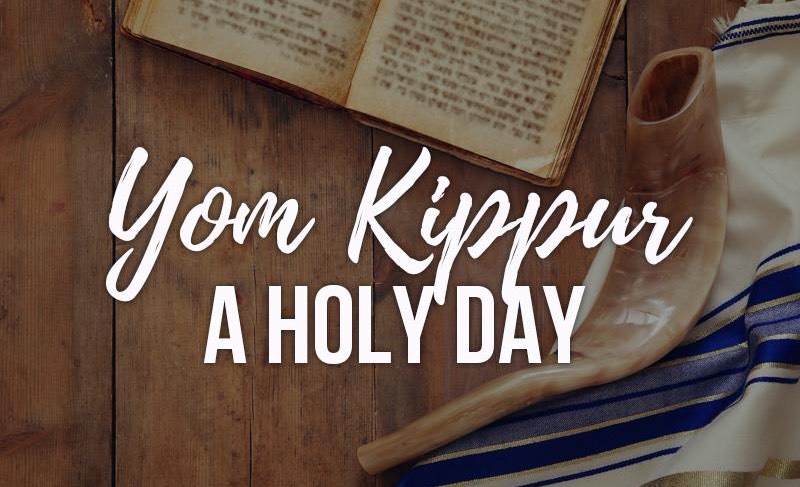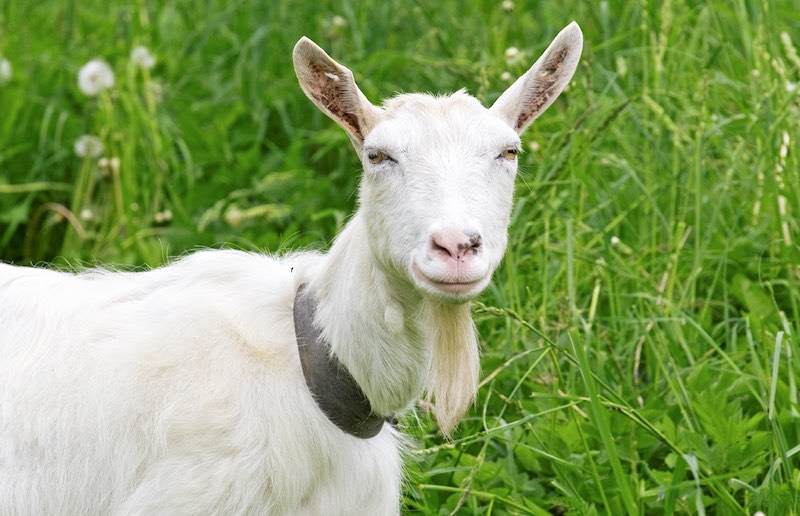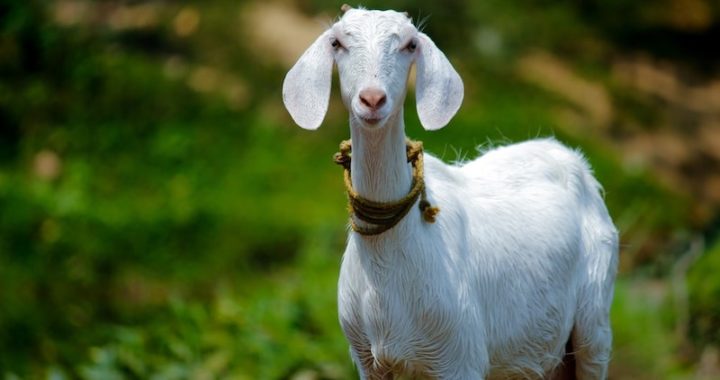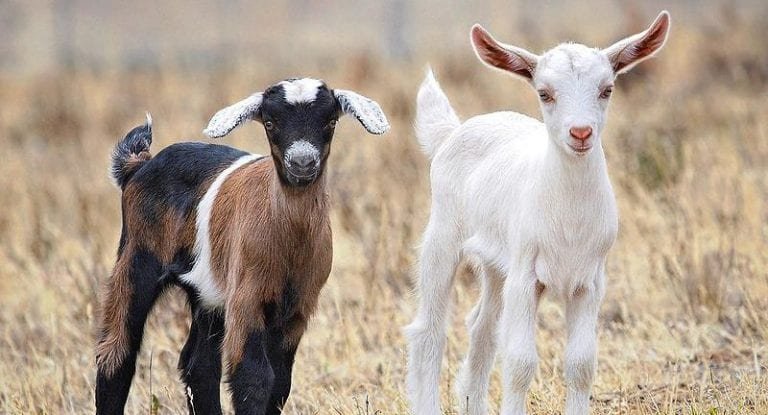Yom Kippur (the Day of Atonement) is considered to be the holiest day of the year for the Jewish people. The sin of the entire nation of the people of Israel has historically been atoned for in generations past through the means of several offerings and sacrifices on Yom Kippur. Although the Temple no longer stands, and therefore there is currently no yearly sacrifice on the Day of Atonement, Yom Kippur is still observed by the Jewish people today with the hope of total cleansing from sin. Was Yom Kippur fulfilled by the Messiah?
Cleansing From Sin
In this week’s Torah Portion we read specific instructions regarding how national atonement for sin was to be accomplished for the Israelites. This instruction came on the heels of the disobedience of Aaron’s two sons, Nadav and Avihu, who had approached God with strange fire and were instantly killed. God then provided the following instructions for Aaron on behalf of the nation of Israel:
Now the LORD spoke to Moses after the death of the two sons of Aaron, when they had approached the presence of the LORD and died. The LORD said to Moses: “Tell your brother Aaron that he shall not enter at any time into the holy place inside the veil, before the mercy seat which is on the ark, or he will die; for I will appear in the cloud over the mercy seat. Aaron shall enter the holy place with this: with a bull for a sin offering and a ram for a burnt offering. He shall put on the holy linen tunic, and the linen undergarments shall be next to his body, and he shall be girded with the linen sash and attired with the linen turban (these are holy garments). Then he shall bathe his body in water and put them on. He shall take from the congregation of the sons of Israel two male goats for a sin offering and one ram for a burnt offering.” – Lev. 16:1-5
The Tabernacle, which resided in the camp of Israel, was the place where God allowed His presence to dwell among His people. The mercy seat of the ark of the covenant, which was located in the holy of holies of the Tabernacle, was the specific place where God’s presence was manifested. It was only the high priest who could enter the holy of holies once a year with the blood of certain sacrifices. God is holy and He demands holiness from His people.
The Five Offerings of Atonement
As we have read in the above verses, the high priest was required to offer a bull and a ram for himself and then two goats and a ram for the nation of Israel. The high priest was first required to make atonement for himself and his family and it was only after this that he was able to offer the sacrifices for the nation of Israel. National atonement for Israel required a total of five animal offerings.
The above verses contain the foundational requirements for a national day of atonement, Yom Kippur or the Day of Atonement. We read the finer details regarding this national observance at the end of Leviticus chapter sixteen:
This shall be a permanent statute for you: in the seventh month, on the tenth day of the month, you shall humble your souls and not do any work, whether the native, or the alien who sojourns among you; for it is on this day that atonement shall be made for you to cleanse you; you will be clean from all your sins before the LORD. – Lev. 16:29-30
Yom Kippur was set apart as a yearly observance on the tenth day of the seventh month on the biblical calendar. It was through the fulfillment of this Day of Atonement that national cleansing from sin was accomplished. The entire nation of Israel received a total spiritual cleansing once a year as the required sacrifices were made to atone for sin.

The Relevance of Yom Kippur
The observation of Yom Kippur provides such a clear picture of cleansing from sin on a national level. Since this is true, why did God orchestrate history so that Yeshua was crucified on Passover instead of Yom Kippur? It would seem to make more sense to have Yeshua’s death correlate with Yom Kippur rather than Passover.
We just finished observing Passover a couple of weeks ago and there is strong identification of Yeshua’s death at Passover with the great redemption provided by the blood of the Lamb. There is also a parallel picture of freedom from slavery in Egypt with freedom from the slavery of sin by the blood of Yeshua. This all being true, it just seems like it would be more obvious to the Jewish people if Yeshua’s death would have correlated with Yom Kippur and the picture of universal cleansing from sin. Do you agree?
I have given much thought to the above rationalization regarding connecting Yeshua’s death to Yom Kippur. This question of Yom Kippur instead of Passover often comes up in conversations with Orthodox Jews when talking about Yeshua as the Messiah who has carried the penalty of our sin. An Orthodox Jew will sometimes ask, “If you Yeshua is the Messiah and died for our sins than why was He not crucified on Yom Kippur?”
I believe there are several good reasons for why God chose Passover as the occasion for Yeshua’s death besides the ones mentioned above. To learn more about why God chose the observance of Passover instead of Yom Kippur for the timing of Yeshua’s death, please read the following article: God’s Sacrifice For the remainder of this article I will focus on how Yeshua’s death is connected to Yom Kippur.
Did Yeshua Fulfill Yom Kippur?
As I began to research and study the subject of Yom Kippur in the New Testament during this past week, I was surprised to discover that Yom Kippur (the Day of Atonement) is never explicitly mentioned in the New Testament. It is more than likely referred to in Acts 27:9 as “the fast” during Paul’s journeys but there is very little other reference to Yom Kippur in the New Testament.
Even though Yom Kippur is not specifically mentioned in the New Testament, it is clearly spoken of in the book of Hebrews. Most of the content in the book of Hebrews explains how Yeshua and His sacrifice fulfill the ceremonial Law in the Tabernacle (and later the Temple) and establish the New Covenant in His blood. In Hebrews chapter nine, we read specifically about how Yeshua fulfilled the role of the high priest by offering His own blood as the perfect sacrifice:
Now when these things have been so prepared, the priests are continually entering the outer tabernacle performing the divine worship, but into the second, only the high priest enters once a year, not without taking blood, which he offers for himself and for the sins of the people committed in ignorance. – Hebrews 9:6-7
But when Messiah appeared as a high priest of the good things to come, He entered through the greater and more perfect tabernacle, not made with hands, that is to say, not of this creation; and not through the blood of goats and calves, but through His own blood, He entered the holy place once for all, having obtained eternal redemption. – Hebrews 9:11-12
In the above selected verses from Hebrews chapter nine we are provided with a clear comparison of the high priest, who had to continually offer the yearly sacrifices for himself and the Israelites (clearly referring to Yom Kippur), with the once and complete sacrifice of Yeshua which has provided eternal redemption. Hebrews chapter nine provides the definitive explanation of how Yeshua fulfilled the essence of Yom Kippur through His own sacrifice.
Did Yeshua Fulfill the Five Sacrifices of Yom Kippur?
From the original five sacrifices that were offered by the high priest on Yom Kippur according to the Law (Lev. 16:1-5), we can take away the two sacrifices that the high priest had to offer for his own sin, since Yeshua had no sin. We are then left with the remaining three sacrifices: the two goats for the sin offering and the one ram for a burnt offering which were offered on behalf of the people. The burnt offering was an offering which was consumed and given totally to the LORD, meaning the priests did not eat of it (Lev. 1:1-9). We know that Yeshua’s life was given totally to the LORD and therefore the burnt offering was fulfilled through His life (Hebrews 10:5-10). We are then left with the two goats that were offered for the sin offering.
Was the Offering of the Two Goats Fulfilled in Yeshua’s Death?
The Two Goats
The offering of the two goats which were required for the sin offering on Yom Kippur are a bit mysterious. Since the instructions for the sin offering of the two goats on Yom Kippur are only mentioned in Leviticus chapter sixteen, we are left with the verses in this chapter to make sense of it all. We read the purpose of the two goats in the following verses:
He shall take the two goats and present them before the LORD at the doorway of the tent of meeting. Aaron shall cast lots for the two goats, one lot for the LORD and the other lot for the scapegoat. – Lev. 16:7-8
The two goats had two different purposes: one goat was designated to the LORD and the second goat was designated as the scapegoat. In what way were these two goats fulfilled through Yeshua’s death?
We know clearly from the text in Leviticus chapter sixteen that the goat designated to the LORD was sacrificed as a sin offering whereas the goat designated as the scapegoat was released into the wilderness:
Then Aaron shall offer the goat on which the lot for the LORD fell, and make it a sin offering. But the goat on which the lot for the scapegoat fell shall be presented alive before the LORD, to make atonement upon it, to send it into the wilderness as the scapegoat. – Lev. 16:9-10
The one goat was sacrificed as a sin offering to the LORD but the other goat was sent away alive into the wilderness.
It is worth noting that the word for “scapegoat” from the above verses in the original Hebrew is the word עזאזל – Azazel, which is a unique word only used four times in all of the Bible and only found here in Leviticus chapter sixteen. Although the meaning of this word is a bit cryptic, the literal translation of this word is the combination of two Hebrew words עז – Ez which means “goat” and אזל – Azal which means “to go away” or “be gone.” The meaning of this word, Azazel, fits perfectly into the context of Yom Kippur as we read about the second goat which is released and sent into the wilderness. How do we see this second goat fulfilled in the death of Yeshua?
The Choice of Yom Kippur
Although we know that Yeshua was not crucified on the day of Yom Kippur, there is a unique connection of the two goats which corresponds to the death of Yeshua. We know that the two goats were taken as a sin offering on behalf of the nation of Israel: one goat being sacrificed and the other goat being released into the wilderness. If the first goat represents Yeshua, who gave His life as a sacrifice, where was the second goat which was released?
I believe the mystery of the second goat is revealed in the New Testament account of Yeshua’s death. Just as the high priest was to cast lots for the two goats in order to designate one goat to be sacrificed to the LORD and the second goat to be released into the wilderness, so too we read how a choice was made between two men on the day that Yeshua was crucified; one man was given as a sacrifice while the other man was released. All four gospel accounts record this choice between the two men and the following is the account as recorded by Matthew:
Now at the feast the governor was accustomed to release for the people any one prisoner whom they wanted. At that time they were holding a notorious prisoner, called Barabbas. So when the people gathered together, Pilate said to them, “Whom do you want me to release for you? Barabbas, or Yeshua who is called Messiah?” For he knew that because of envy they had handed Him over. While he was sitting on the judgment seat, his wife sent him a message, saying, “Have nothing to do with that righteous Man; for last night I suffered greatly in a dream because of Him.” But the chief priests and the elders persuaded the crowds to ask for Barabbas and to put Yeshua to death. But the governor said to them, “Which of the two do you want me to release for you?” And they said, “Barabbas.” Pilate said to them, “Then what shall I do with Yeshua who is called Messiah?” They all said, “Crucify Him!” And he said, “Why, what evil has He done?” But they kept shouting all the more, saying, “Crucify Him!” When Pilate saw that he was accomplishing nothing, but rather that a riot was starting, he took water and washed his hands in front of the crowd, saying, “I am innocent of this Man’s blood; see to that yourselves.” And all the people said, “His blood shall be on us and on our children!” Then he released Barabbas for them; but after having Yeshua scourged, he handed Him over to be crucified. – Matthew 27:15-26
At the place of judgment, one life was chosen for death and another life was chosen for release. Unbeknownst to Pilate, the lot was cast for the two goats: Yeshua was chosen as the LORD’s sacrifice while Barabbas was released. Although it was Pilate who made the final decision it is worth noting that the chief priests were directing the crowd and influencing the decision for Yeshua to be crucified.

The Chosen Goat of Yom Kippur
The release of Barabbas in place of Yeshua fits perfectly into the context of the two offerings of Yom Kippur with their two different destinies. Another significant aspect to this understanding of Yeshua and Barabbas representing the two goats of Yom Kippur is the meaning of the name Barabbas. In Hebrew Barabbas is spelled בר–אבא – Bar’Abba and plainly means “son of the father.” Therefore, in this context, one Son of the Father (Yeshua) was condemned to be crucified while the other son of the father (Bar’Abba) was released.
The two goats of Yom Kippur had their fulfillment on Passover two thousand years ago. It was only Yeshua who was chosen as the goat designated to the LORD and whose blood was shed that day in order to bring universal cleansing from sin, having fulfilled the requirements Yom Kippur in their entirety.
We generally speak of Yeshua as the “Passover Lamb” and this is true, however, it is also equally true to speak of Yeshua as the “Chosen Goat of Yom Kippur.” We actually read in the Passover account in the book of Exodus how the Passover sacrifice could be chosen from either the lambs or the goats:
Your lamb shall be an unblemished male a year old; you may take it from the sheep or from the goats. – Ex. 12:5
Yeshua literally became the Passover Lamb on the day that He was crucified but we also see a clear fulfillment of His sacrifice as the “Chosen Goat of Yom Kippur” as He became the universal sacrifice for sin.
Shabbat Shalom!
If you enjoyed reading this article, share it today with friends! We also invite you to sign up for our weekly Torah Portion commentary on the sidebar to the right.
Help keep our weekly commentaries free and available to all. Click here to donate today:
*All Scripture take from NASB Copyright © 1960, 1962, 1963, 1968, 1971, 1972, 1973, 1975, 1977, 1995 by The Lockman Foundation
**The Hebrew name “Yeshua” is used in the biblical quotations in place of the English name “Jesus” to give emphasis to the meaning of this name, salvation. The word “Messiah” is also used in place of the word “Christ” to bring clarity to the office of Yeshua.




Interesting on the goat to Azazel representing Bar’abba. However, after thinking about it, that goat was a sin offering, too. I don’t see Bar’abba being a sin offering taking away the sins of the people (Lev 16:20-22). Furthermore, the goat to the LORD was to cleanse the “holy place” (sanctuary), its implements and other furnishings as well as the sacrificial alter of the defilement from the sins of the people over the past year (Lev 16:15-19).
Lev 16:15“Then he shall kill the goat of the sin offering that is for the people and bring its blood inside the veil and do with its blood as he did with the blood of the bull, sprinkling it over the mercy seat and in front of the mercy seat. 16Thus he shall make atonement for the Holy Place, because of the uncleannesses of the people of Israel and because of their transgressions, all their sins. And so he shall do for the tent of meeting, which dwells with them in the midst of their uncleannesses.” IMO verse 16 is the KEY here… it is the purging of the “Holy Place”.
I don’t really see either of these sacrifices as being fulfilled by Yeshua. Thank you.
Bob, I appreciate your analysis but I think you have missed the bigger picture. First of all, Yeshua was sacrificed on the day of Passover as the Passover Lamb. The people did not eat Yeshua’s flesh, but He died as the Passover lamb symbolically. In the same way we see the connection to the Day of Atonement with the two goats: one offered as a sacrifice and the other being set free in the wilderness. Yeshua was crucified and Bar-Abba was set free.